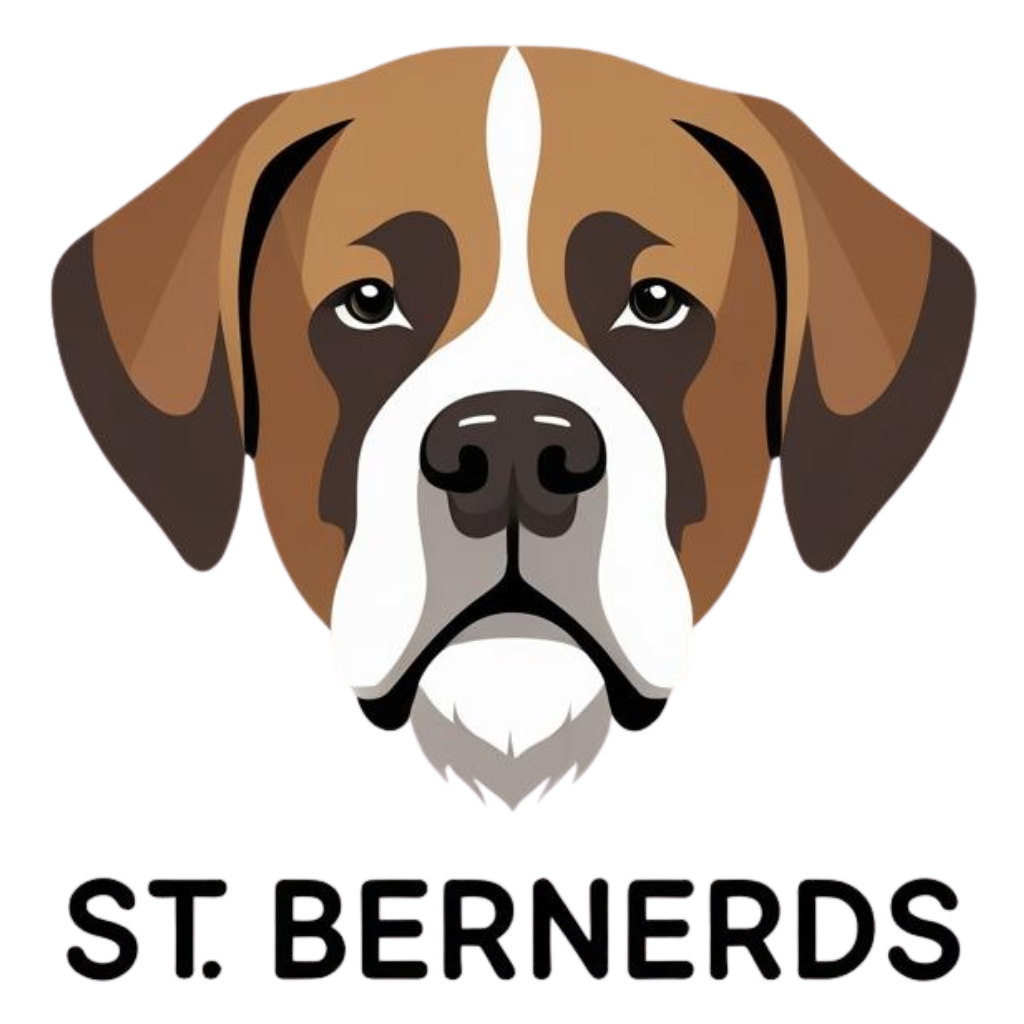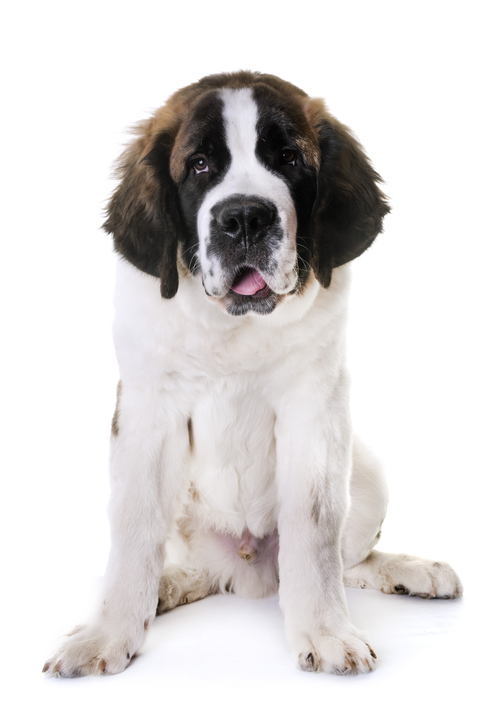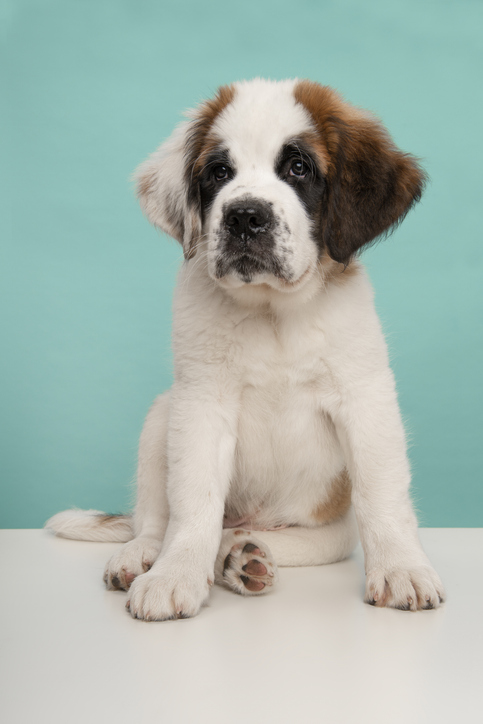If you’re torn between bringing home a Saint Bernard or a Bernese Mountain Dog, you’ve come to the right place. These two gentle giants are absolute sweethearts, and I’m thrilled to help you figure out which one might be the perfect fit for your life. Both breeds are known for their massive size, loving nature, and rich histories, but they’ve got some key differences that could sway your decision. So, let’s dive into this Saint Bernard vs Bernese Mountain Dog comparison and break it all down for you.
Introduction to Saint Bernard vs Bernese Mountain Dog
First off, let’s chat about why these two breeds are so popular as family pets. Saint Bernards and Bernese Mountain Dogs are often seen as the ultimate cuddly companions. They’re big, fluffy, and have hearts of gold, making them fantastic for families or anyone looking for a loyal buddy. Saint Bernards are famous for their rescue history in the Swiss Alps, often pictured with a little barrel around their neck (though that’s more myth than fact). Bernese Mountain Dogs, on the other hand, hail from the farmlands of Switzerland, where they were bred as working dogs to pull carts and guard livestock. Both breeds have a knack for stealing hearts with their gentle demeanor.
Historically, Saint Bernards were developed by monks in the Great St. Bernard Pass to help with rescue missions in snowy, treacherous terrain. Their strength and sense of direction saved countless lives. Bernese Mountain Dogs, meanwhile, were all-purpose farm dogs in the Bern region of Switzerland, known for their versatility and calm nature. Today, both are more likely to be found lounging on your couch than working in the mountains, but their heritage still shines through in their personalities and builds.
The purpose of this Saint Bernard vs Bernese Mountain Dog comparison is simple: I want to help you decide which of these amazing breeds aligns with your lifestyle. Whether it’s space, energy levels, or family dynamics, we’ll cover all the bases to make sure you’re ready to welcome the right pup into your home.
Physical Characteristics: Saint Bernard vs Bernese Mountain Dog
Alright, let’s get into the nitty-gritty of how these two stack up physically. When it comes to size, both breeds are huge, but there are differences. Saint Bernards are often the heavier of the two, typically weighing between 140 to 180 pounds for males, and standing 28 to 30 inches tall at the shoulder. Bernese Mountain Dogs are a bit lighter, usually ranging from 80 to 115 pounds for males, with a height of 25 to 27.5 inches. So, in a Saint Bernard vs Bernese Mountain Dog size-off, the Saint Bernard usually takes the crown for sheer mass.
Their builds are also slightly different. Saint Bernards have a more robust, barrel-chested look, built for endurance in harsh conditions. Bernese Mountain Dogs have a sturdier, more athletic frame, reflecting their history of pulling carts and herding. Coat-wise, both breeds are fluffy, but their fur tells different stories. Saint Bernards come in short-haired and long-haired varieties, with colors like white with red or brown markings. Bernese Mountain Dogs have a signature tricolor coat—black, white, and rust—with a thick, silky texture that’s always long.
Grooming needs tie into their coats, and we’ll dive deeper into that later, but know that both shed a lot, especially seasonally. Living environment is a big factor with these giants. Saint Bernards, with their massive size, need more space to sprawl out, and they’re prone to overheating, so cooler climates are ideal. Bernese Mountain Dogs are a bit more adaptable but still thrive in cooler weather due to their thick fur. If you’re in a tiny apartment, either breed might feel like a challenge, but we’ll talk more about that in the Bernese Mountain Dog vs Saint Bernard lifestyle fit later.
Temperament and Personality: Bernese Mountain Dog vs Saint Bernard
Now, let’s talk about what these dogs are like to live with. Both breeds are known for being gentle giants, but their personalities have unique flavors. Saint Bernards are often described as patient and kind, almost like a big, furry babysitter. They’re super calm, sometimes to the point of being a bit lazy, and they love just hanging out with their people. Bernese Mountain Dogs are equally sweet but tend to have a bit more energy and playfulness, especially when they’re young. They’re also incredibly affectionate and often want to be right by your side.
When it comes to families, kids, and other pets, both breeds shine. Saint Bernards are famously good with children, often tolerating endless ear-pulling and tail-tugging with saintly patience (pun intended). Bernese Mountain Dogs are just as family-oriented, often forming tight bonds with everyone in the household, including other pets if socialized early. Speaking of socialization, both breeds need it in spades as puppies to ensure they grow up confident and friendly. Trainability-wise, Saint Bernards can be a bit stubborn, but they respond well to gentle, consistent methods. Bernese Mountain Dogs are usually eager to please, making training a tad easier, though they can have a goofy streak. In this Bernese Mountain Dog vs Saint Bernard personality matchup, it’s really about whether you want a laid-back pal or a slightly more engaging companion.
Health and Lifespan Comparison
Okay, let’s get real for a moment—health is a big deal with these breeds. Both Saint Bernards and Bernese Mountain Dogs are prone to certain issues due to their size. Saint Bernards often deal with hip and elbow dysplasia, bloat (a life-threatening stomach condition), and heart issues. Bernese Mountain Dogs also face hip dysplasia, along with a higher risk of certain cancers like histiocytic sarcoma, which is sadly common in the breed. Both can have eye conditions like cataracts or entropion, so regular checkups are non-negotiable.
Lifespan is another tough topic. Saint Bernards typically live 8 to 10 years, while Bernese Mountain Dogs have an even shorter average of 6 to 8 years, though some do reach 10 with excellent care. Factors like diet, exercise, and genetics play a huge role in longevity for both. I can’t stress enough how important it is to work with a reputable breeder who screens for health issues or to adopt from a rescue that provides health histories. Regular vet visits, a balanced diet, and keeping an eye on their weight (obesity is a killer for big dogs) can make a world of difference. When comparing Saint Bernard vs Bernese Mountain Dog health, neither breed is “healthier,” but their specific risks vary, so do your homework.
Exercise and Activity Needs: Saint Bernard vs Bernese Mountain Dog
Let’s talk about keeping these big pups active. Neither breed is a high-energy dynamo like a Border Collie, but they still need regular exercise to stay healthy and happy. Saint Bernards are pretty low-key, often content with a couple of short walks a day—think 30 to 60 minutes total. They’re not built for intense activity, especially in hot weather, due to their size and coat. Bernese Mountain Dogs, on the other hand, have a bit more get-up-and-go, especially as puppies or young adults. They’ll need about an hour of moderate exercise daily, like walks or playtime in a yard.
Both breeds enjoy activities that engage their minds and bodies. For Saint Bernards, a leisurely hike or some backyard lounging with you is perfect. Bernese Mountain Dogs might enjoy pulling a small cart (a nod to their heritage) or even some light agility training. If you’ve got limited space or time, a Saint Bernard might be the easier fit since they’re less demanding in this department. But neither dog is ideal for a sedentary lifestyle—without enough activity, they can pack on pounds, which is terrible for their joints. So, in a Saint Bernard vs Bernese Mountain Dog exercise comparison, the Bernese usually needs a bit more action, but neither will have you running marathons.
rooming and Maintenance
Alright, let’s tackle the fluffy elephant in the room—grooming. Both of these breeds have gorgeous coats, but they come with some upkeep. Saint Bernards, whether short- or long-haired, shed a ton, especially during seasonal changes. Brushing them a couple of times a week helps, but if they’re long-haired, you might need to do it more often to prevent mats. Bernese Mountain Dogs also shed like crazy, with their thick, double coats blowing out twice a year. Weekly brushing (or more during shedding season) is a must to keep fur tumbleweeds from taking over your house.
Managing shedding in your home means investing in a good vacuum and maybe some lint rollers for your clothes. Both breeds drool to some extent—Saint Bernards are notorious for it, so keep a towel handy. Beyond fur, you’ll need to clean their ears regularly to prevent infections, especially with Saint Bernards, whose droopy ears can trap moisture. Nail trimming, dental care, and the occasional bath (not too often, as it can dry out their skin) round out their maintenance needs. In a Bernese Mountain Dog vs Saint Bernard grooming showdown, neither is low-maintenance, but the Saint Bernard’s drool might add an extra layer of mess to clean up.
Which Breed is Right for You? Bernese Mountain Dog vs Saint Bernard
So, we’ve covered a lot of ground, and now it’s decision time. Choosing between these two comes down to your lifestyle and what you’re looking for in a dog. If you’ve got a busy schedule or limited space, a Saint Bernard might be your pick—they’re more laid-back and don’t need as much exercise, though they still need room to stretch out. If you’re an active person or have a big yard, a Bernese Mountain Dog could be a great match, as they love being involved and have a bit more energy to burn.
Family dynamics matter too. Both breeds are amazing with kids, but Saint Bernards might edge out slightly if you’ve got very young children due to their ultra-patient nature. If you’ve got other pets or want a dog that’s a bit more playful, the Bernese might win. Climate is another factor—both do best in cooler areas, but Saint Bernards are especially sensitive to heat. And don’t forget about lifespan and health concerns; are you prepared for the shorter life of a Bernese Mountain Dog or the potential medical costs for either breed?
My final thought on this Bernese Mountain Dog vs Saint Bernard decision is to think long-term. These dogs are a big commitment in terms of space, time, and heart. Whichever you choose, you’re getting a loyal, loving companion, so take your time to make sure it’s the right fit for your life.
Conclusion
To wrap things up, let’s recap the key points in this Saint Bernard vs Bernese Mountain Dog comparison. Both breeds are incredible, with their massive size, gentle personalities, and stunning looks. Saint Bernards are the ultimate chill buddies, perfect for a quieter household, while Bernese Mountain Dogs bring a bit more energy and playfulness to the table. They’ve got differences in exercise needs, grooming challenges, and health concerns, but their love for their families is unmatched.
I encourage you to dig deeper—read up on breed-specific forums, talk to owners, and if possible, meet both breeds in person to see which one clicks with you. And hey, consider adoption! There are so many wonderful Saint Bernards and Bernese Mountain Dogs in rescues waiting for a home. If you go the breeder route, make sure they’re responsible and prioritize health testing. Whichever path you take, I’m rooting for you to find your perfect furry friend.


